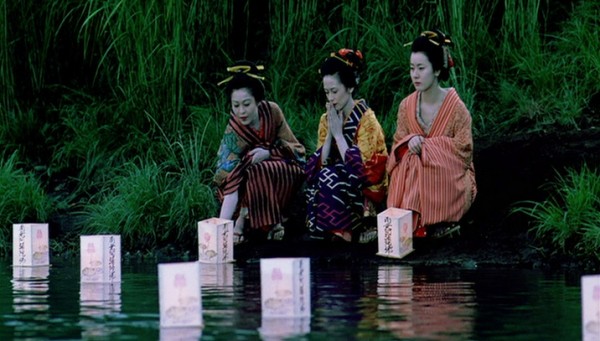
A young samurai stumbles into a geisha house in the middle of the night, seeking refuge from a group of men that he is fleeing from. After a kind hearted young geisha protects her, an affection develops between the two. This is the premise of Akira Kurosawa‘s final screenplay The Sea Is Watching, which was directed in 2002 by Kei Kumai and will be our film club‘s movie of the month this July.
The Sea Is Watching is a relatively quiet story that in many ways resembles the first posthumous Kurosawa film After the Rain, which we watched last month. Both take place in relatively similar settings, and in both films water plays a key element in the story. Structurally, The Sea Is Watching is somewhat more episodic, closer to the narrative design of Kurosawa’s final film Madadayo.
That the tones of Kurosawa’s two posthumous films are so similar is no doubt partly due to both films being based on works by Shūgorō Yamamoto, whose novels and short stories also served as the basis for Sanjuro, Red Beard, Dodesukaden and Dora-Heita. What differentiates The Sea Is Watching from After the Rain, however, is that it is not an homage in the same way as the earlier film had been. Although still produced by Kurosawa Productions, starring Hidetaka Yoshioka (memorably the older boy in Rhapsody in August, also appearances in Madadayo and After the Rain) and with costume design by Kazuko Kurosawa, the cast and the crew were this time largely made up of people who had never worked with Kurosawa. Kumai apparently also had more say over the screenplay than had been the case with the Takashi Koizumi directed After the Rain.
The Sea Is Watching has been released outside of Japan with English subtitles. For more information, check out our listing of films with Kurosawa’s involvement.
This is the last month of the film club’s current cycle but fear not, we are already discussing future films. Join us to shape the club’s future!






Just ordered my copy!